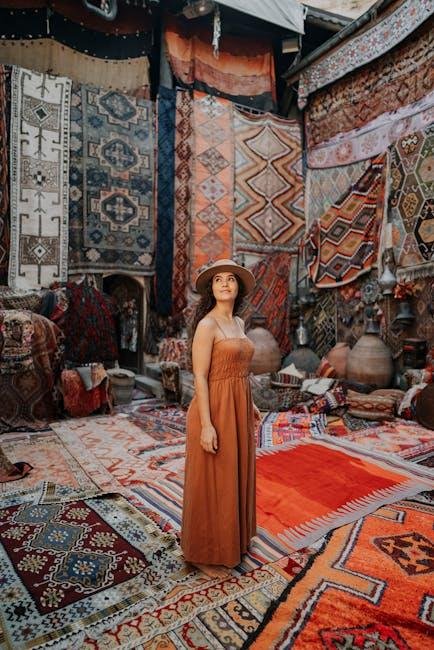There’s something magical about layering rugs—a simple design trick that instantly transforms any room from flat and basic to rich and inviting. By combining textures, colors, and patterns, layering rugs adds depth and personality to your space in a way that feels both effortless and artful. Whether you’re looking to cozy up a living room, define a seating area, or inject a splash of creativity into your home, this versatile styling secret opens up a world of possibilities. Ready to elevate your interiors? Let’s explore how layering rugs can turn your space into a vibrant, textured haven that truly reflects your style.
Table of Contents
- Choosing the Perfect Base Rug to Anchor Your Space
- Mixing Textures and Patterns for Visual Interest
- How to Play with Colors to Create a Cohesive Look
- Styling Tips for Different Rooms and Budgets
- Concluding Remarks
Choosing the Perfect Base Rug to Anchor Your Space
Start with a base rug that truly embodies the tone and style you wish to cultivate. This foundational piece is more than just a floor covering; it’s the canvas that sets the entire mood of your room. Consider textures that invite touch and patterns that resonate with your overall décor — perhaps a woven jute for rustic warmth, or a low-pile Persian design to anchor a more refined atmosphere. Think about scale and proportion: a large rug can unify disparate furniture pieces, while a more neutral palette ensures versatility for future layering adventures.
When selecting this essential base, keep in mind the lifestyle of your space. Durability and ease of maintenance should be companions to beauty, especially in high-traffic areas. Colors that conceal wear or subtle patterns hidden beneath more playful top layers allow for flexibility, so your room can evolve without needing a complete overhaul. Here are some tips to guide your choice:
- Choose natural fibers like wool or cotton for long-lasting comfort and style.
- Opt for muted hues if you want the freedom to build bold, eclectic layers above.
- Match rug size to your seating arrangement to create harmony and balance.
Mixing Textures and Patterns for Visual Interest
Bringing together different textures and patterns can transform an ordinary rug arrangement into a captivating centerpiece. Imagine pairing a plush, velvety rug with a flat-weave jute or sisal underneath—it creates an inviting tactile contrast that draws the eye and invites touch. Don’t shy away from mixing patterns either; a bold geometric print layered over a subtle floral or abstract motif can inject personality without overwhelming the room. The key to success is balancing scale and color—choose complementary hues and vary the size of the patterns to avoid visual chaos.
- Play with contrasts: combine smooth and rough textures to create depth.
- Mix pattern sizes: balance large-scale designs with smaller, intricate prints.
- Stick to a color palette: ensure patterns share common tones for cohesion.
When layering rugs, think of your floor as a canvas for self-expression. The interplay between different fabrics and designs brings warmth and energy that a single rug simply can’t achieve. This approach not only adds depth to your space but also creates a dynamic foundation that complements furniture and décor with effortless style. Experiment boldly, but always keep harmony in mind—the perfect balance between textures and patterns makes your home uniquely inviting.
How to Play with Colors to Create a Cohesive Look
When working with multiple rugs, the key to a harmonious design lies in blending colors thoughtfully. Start with a neutral base rug and layer on smaller pieces featuring accent tones that echo your room’s palette. This approach allows you to experiment without overwhelming the space. Incorporate subtle shifts in hue—from soft, dusty shades to bold jewel tones—to add depth and create a dynamic visual narrative. Remember, the goal is to complement rather than compete, so look for rugs that share undertones or a recurring color to anchor the ensemble.
To elevate your look further, consider these creative ways to coordinate colors across rugs:
- Repeat a color: Pick one color from your room’s decor and weave it into your rugs to establish continuity.
- Mix warm and cool hues: A blend of warm tones like rust or ochre with cool blues or greens can create a balanced and inviting atmosphere.
- Play with contrast: Layering a monochromatic rug atop a patterned one can showcase texture and shape without clashing colors.
Styling Tips for Different Rooms and Budgets
When it comes to transforming rooms with layered rugs, consider the function and vibe of each space. In living rooms, start with a large, neutral base rug to anchor seating areas, then add a smaller, vibrant or patterned rug on top to inject personality. For bedrooms, layering a soft, plush rug over a natural fiber one creates an inviting texture perfect for cozy mornings. Utilize rugs of varying sizes and materials to play with depth—think jute beneath a bold, vintage oriental rug or a fluffy sheepskin atop a flat-weave. This approach works wonders across all budgets, allowing you to mix affordable pieces with standout heirlooms or investment-quality rugs effortlessly.
Smaller rooms or tighter budgets don’t have to miss out on this trend. Use inexpensive, washable rugs layered over durable sisal or carpet remnants to brighten and define your space without breaking the bank. In kitchens or dining areas, where spills are common, layering rugs with washable tops can add both practicality and chic charm. Don’t hesitate to experiment with unexpected color combinations or asymmetrical layering for a modern twist. Remember these quick styling tips:
- Choose a rug with a solid or subtle pattern as your base
- Layer with a smaller, textured or contrasting rug for visual interest
- Balance colors and shapes to maintain harmony in the room
- Mix materials like wool, cotton, and natural fibers for tactile variety
Concluding Remarks
Layering rugs is more than just a design trend—it’s a creative way to bring warmth, texture, and personality into your home. By mixing patterns, colors, and materials, you transform ordinary floors into inviting focal points that tell your unique story. So go ahead, experiment with different styles and sizes, and watch your space come alive with depth and character. Remember, the beauty of layering lies in its freedom—there are no rules, only endless possibilities to make your home truly yours. Happy layering!







